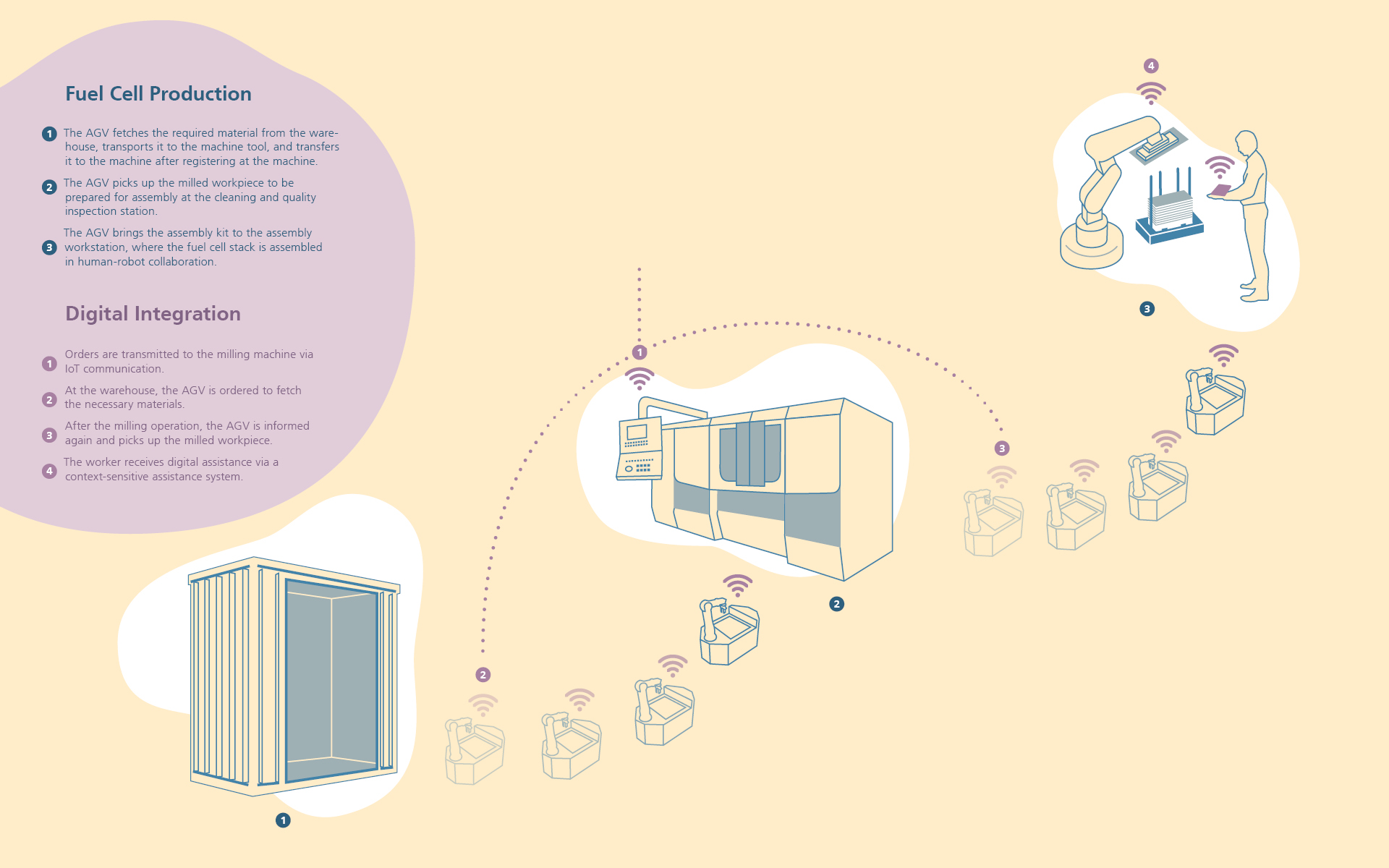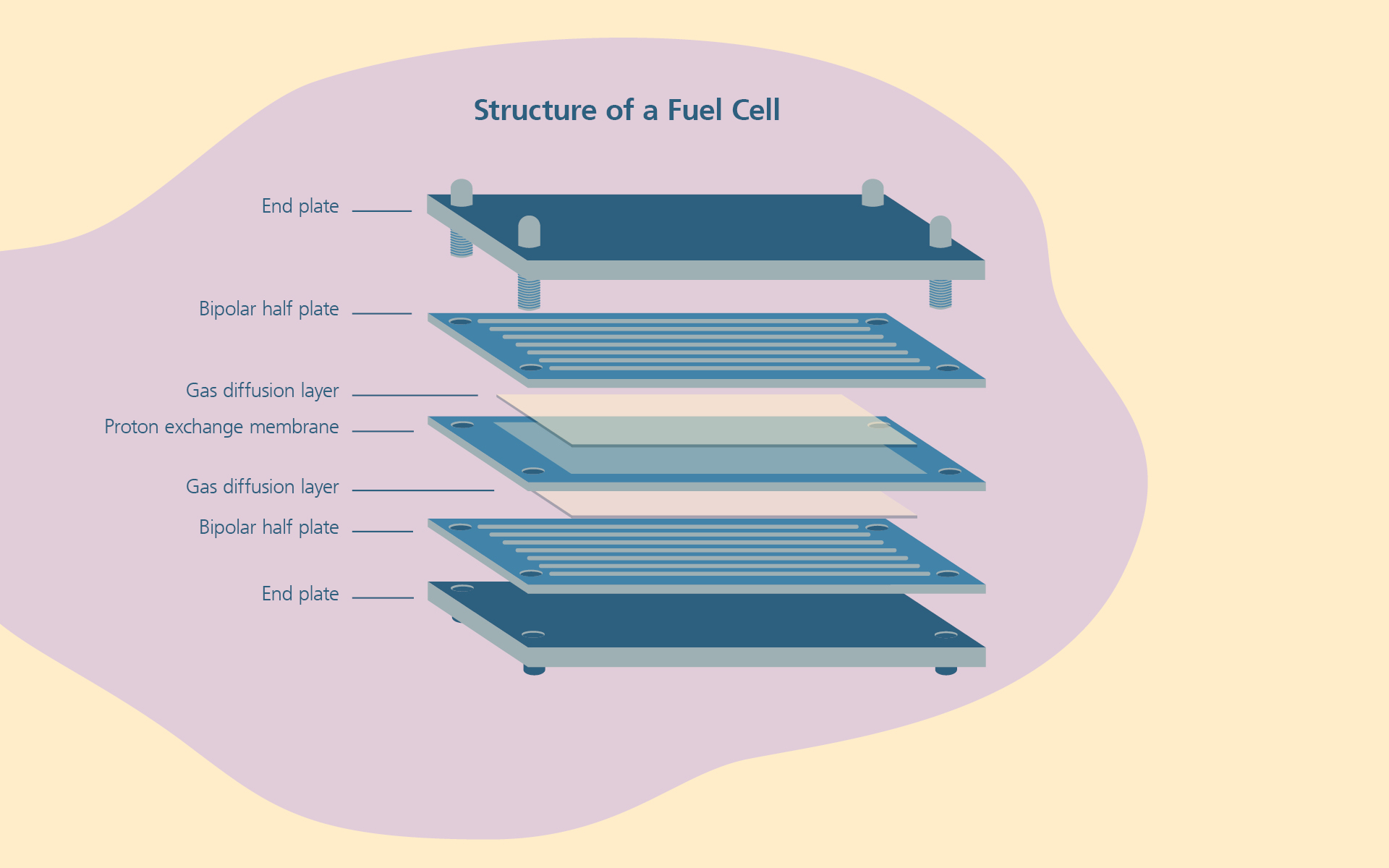Smart Manufacturing of Fuel Cells
Energy and climate-neutral energy provision have been a concern in our society since well before the global environmental and political events we are seeing today – although these do have the potential to fuel some promising approaches. One energy generation technology that is currently receiving a lot of media and research attention is the fuel cell.This technology can be used to generate electrical energy directly from water and oxygen. As far back as 1875, Jules Verne described water as »the coal of the future,« a reference to the principle of the fuel cell.
To make the principle fit for economical mass deployment, numerous players are carrying out research into fuel cell engineering and solutions for producing fuel cells. While many of them drive series or mass production, Fraunhofer IPK is focusing on the efficient single-item and small-batch production of customizable fuel cells for niche markets. For reasons of profitability, these areas still require a lot of manual operations when building fuel cells. Here, digitally integrated production enables huge increases in efficiency. At Fraunhofer IPK, we define this as the harmonious interplay of humans, machines and processes with the help of Industry 4.0 technologies.

Digitally integrated production you can touch
With funding from the Berlin Senate and using the research infrastructure at the Production Technology Center (PTZ) Berlin, a team at Fraunhofer IPK is currently setting up the »Digitally Integrated Production (dip)« application lab. It addresses the challenge of production networking using intelligent workshop-oriented fuel cell manufacturing as an example. The application lab »dip« is designed to function as a development and testing lab working at the interface between industrial research and non-university research to intensify cooperation with businesses and support the transfer of results in both directions. The spectrum ranges from knowledge and technology transfer in the interest of rapid entry, to the (further) development of technologies in a modular and flexible development environment along the process chain, to opportunities to test the use of Industry 4.0 technologies and components. The particular challenge in setting up the »dip« lab starts with drawing up requirements specifications for the production systems to be integrated. The background to this is that, when it comes to procurement, specific digitalization requirements have so far been a secondary priority, if they have been considered at all. This is also one of the reasons why many businesses are finding it difficult to incorporate Industry 4.0. Retrospectively analyzing what information needs to be exchanged between which players along what path, at what time and using what software tools is highly resource-intensive. In the »dip« application lab, best practice solutions will therefore emerge to show not only what works, but also how to implement it effectively and efficiently.

Work steps of a fuel cell production
The key components of a fuel cell stack are bipolar plates, a proton exchange membrane and end plates. In the lab, in a realistic scenario customizable bipolar plates made from metal or graphite are manufactured automatically in a state-of-the-art CNC milling machine. The orders are communicated to the milling machine through IoT (Internet of Things). An autonomous guided vehicle (AGV) picks up the necessary material from the warehouse, transports it to the machine tool and, once it has been registered, hands it over to the machine. Once the milling process is complete, the AGV is informed that the milled workpiece can be collected to be prepared for assembly at the cleaning and quality control station. Here too, communication between the systems is IoT-based. The same process is used to produce the end plates.
To ensure that components can be identified at any time, each one receives its own ID in the form of a laserengraved QR code. This way, important information can also be assigned to the individual components in a Digital Product Twin during the use phase. For the last production step, assembly, the AGV transports an assembly kit consisting of bipolar plates, membranes, end plates and other components to the assembly workplace, where the fuel cell stack is put together by way of human-robot collaboration. The human is not only physically assisted by the robot, but also receives digital help through a context-sensitive assistance system. Uninterrupted information networking creates a transparent production process in which deviations from the target process can be identified in real time and appropriate countermeasures can be implemented through self-organizing production.
 Fraunhofer Institute for Production Systems and Design Technology
Fraunhofer Institute for Production Systems and Design Technology